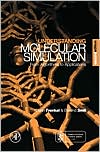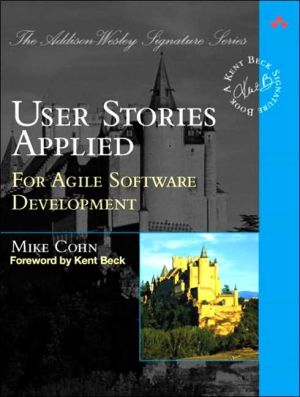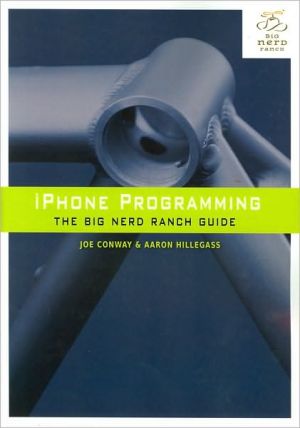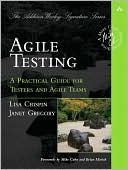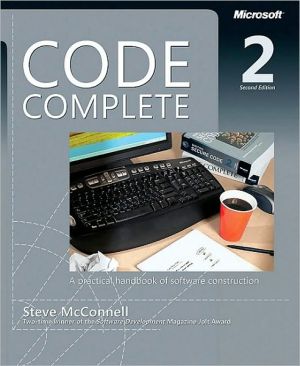Understanding Molecular Simulation: From Algorithms to Applications
Understanding Molecular Simulation: From Algorithms to Applications explains the physics behind the "recipes" of molecular simulation for materials science. Computer simulators are continuously confronted with questions concerning the choice of a particular technique for a given application. A wide variety of tools exist, so the choice of technique requires a good understanding of the basic principles. More importantly, such understanding may greatly improve the efficiency of a simulation...
Search in google:
Understanding Molecular Simulation: From Algorithms to Applications explains the physics behind the "recipes" of molecular simulation for materials science. Computer simulators are continuously confronted with questions concerning the choice of a particular technique for a given application. A wide variety of tools exist, so the choice of technique requires a good understanding of the basic principles. More importantly, such understanding may greatly improve the efficiency of a simulation program. The implementation of simulation methods is illustrated in pseudocodes and their practical use in the case studies used in the text.Since the first edition only five years ago, the simulation world has changed significantly — current techniques have matured and new ones have appeared. This new edition deals with these new developments; in particular, there are sections on:· Transition path sampling and diffusive barrier crossing to simulaterare events· Dissipative particle dynamic as a course-grained simulation technique· Novel schemes to compute the long-ranged forces· Hamiltonian and non-Hamiltonian dynamics in the context constant-temperature and constant-pressure molecular dynamics simulations· Multiple-time step algorithms as an alternative for constraints· Defects in solids· The pruned-enriched Rosenbluth sampling, recoil-growth, and concerted rotations for complex molecules· Parallel tempering for glassy HamiltoniansExamples are included that highlight current applications and the codes of case studies are available on the World Wide Web. Several new examples have been added since the first edition to illustrate recent applications. Questions are included in this new edition. No prior knowledge of computer simulation is assumed. Booknews This work for nonexperts involved in computer simulation explains the physics behind the techniques of molecular simulation in materials science, allowing those using simulation to choose appropriate techniques and improve the efficiency of a simulation program. The implementation of simulation methods is illustrated in pseudocodes and their practical use is demonstrated in case studies. This edition presents new material on areas such as transition path sampling and diffusive barrier crossing to simulate rare events, dissipative particle dynamics as a course-grained simulation technique, and parallel tempering for glassy Hamiltonians. Frenkel is affiliated with the FOM Institute for Atomic and Molecular Physics and teaches chemical engineering at the University of Amsterdam, The Netherlands. Smit teaches chemical engineering at the University of Amsterdam. Annotation c. Book News, Inc., Portland, OR (booknews.com)
Preface to the Second EditionxiiiPrefacexvList of Symbolsxix1Introduction1Part IBasics72Statistical Mechanics92.1Entropy and Temperature92.2Classical Statistical Mechanics132.2.1Ergodicity152.3Questions and Exercises173Monte Carlo Simulations233.1The Monte Carlo Method233.1.1Importance Sampling243.1.2The Metropolis Method273.2A Basic Monte Carlo Algorithm313.2.1The Algorithm313.2.2Technical Details323.2.3Detailed Balance versus Balance423.3Trial Moves433.3.1Translational Moves433.3.2Orientational Moves483.4Applications513.5Questions and Exercises584Molecular Dynamics Simulations634.1Molecular Dynamics: The Idea634.2Molecular Dynamics: A Program644.2.1Initialization654.2.2The Force Calculation674.2.3Integrating the Equations of Motion694.3Equations of Motion714.3.1Other Algorithms744.3.2Higher-Order Schemes774.3.3Liouville Formulation of Time-Reversible Algorithms774.3.4Lyapunov Instability814.3.5One More Way to Look at the Verlet Algorithm824.4Computer Experiments844.4.1Diffusion874.4.2Order-n Algorithm to Measure Correlations904.5Some Applications974.6Questions and Exercises105Part IIEnsembles1095Monte Carlo Simulations in Various Ensembles1115.1General Approach1125.2Canonical Ensemble1125.2.1Monte Carlo Simulations1135.2.2Justification of the Algorithm1145.3Microcanonical Monte Carlo1145.4Isobaric-Isothermal Ensemble1155.4.1Statistical Mechanical Basis1165.4.2Monte Carlo Simulations1195.4.3Applications1225.5Isotension-Isothermal Ensemble1255.6Grand-Canonical Ensemble1265.6.1Statistical Mechanical Basis1275.6.2Monte Carlo Simulations1305.6.3Justification of the Algorithm1305.6.4Applications1335.7Questions and Exercises1356Molecular Dynamics in Various Ensembles1396.1Molecular Dynamics at Constant Temperature1406.1.1The Andersen Thermostat1416.1.2Nose-Hoover Thermostat1476.1.3Nose-Hoover Chains1556.2Molecular Dynamics at Constant Pressure1586.3Questions and Exercises160Part IIIFree Energies and Phase Equilibria1657Free Energy Calculations1677.1Thermodynamic Integration1687.2Chemical Potentials1727.2.1The Particle Insertion Method1737.2.2Other Ensembles1767.2.3Overlapping Distribution Method1797.3Other Free Energy Methods1837.3.1Multiple Histograms1837.3.2Acceptance Ratio Method1897.4Umbrella Sampling1927.4.1Nonequilibrium Free Energy Methods1967.5Questions and Exercises1998The Gibbs Ensemble2018.1The Gibbs Ensemble Technique2038.2The Partition Function2048.3Monte Carlo Simulations2058.3.1Particle Displacement2058.3.2Volume Change2068.3.3Particle Exchange2088.3.4Implementation2088.3.5Analyzing the Results2148.4Applications2208.5Questions and Exercises2239Other Methods to Study Coexistence2259.1Semigrand Ensemble2259.2Tracing Coexistence Curves23310Free Energies of Solids24110.1Thermodynamic Integration24210.2Free Energies of Solids24310.2.1Atomic Solids with Continuous Potentials24410.3Free Energies of Molecular Solids24510.3.1Atomic Solids with Discontinuous Potentials24810.3.2General Implementation Issues24910.4Vacancies and Interstitials26310.4.1Free Energies26310.4.2Numerical Calculations26611Free Energy of Chain Molecules26911.1Chemical Potential as Reversible Work26911.2Rosenbluth Sampling27111.2.1Macromolecules with Discrete Conformations27111.2.2Extension to Continuously Deformable Molecules27611.2.3Overlapping Distribution Rosenbluth Method28211.2.4Recursive Sampling28311.2.5Pruned-Enriched Rosenbluth Method285Part IVAdvanced Techniques28912Long-Range Interactions29112.1Ewald Sums29212.1.1Point Charges29212.1.2Dipolar Particles30012.1.3Dielectric Constant30112.1.4Boundary Conditions30312.1.5Accuracy and Computational Complexity30412.2Fast Multipole Method30612.3Particle Mesh Approaches31012.4Ewald Summation in a Slab Geometry31613Biased Monte Carlo Schemes32113.1Biased Sampling Techniques32213.1.1Beyond Metropolis32313.1.2Orientational Bias32313.2Chain Molecules33113.2.1Configurational-Bias Monte Carlo33113.2.2Lattice Models33213.2.3Off-lattice Case33613.3Generation of Trial Orientations34113.3.1Strong Intramolecular Interactions34213.3.2Generation of Branched Molecules35013.4Fixed Endpoints35313.4.1Lattice Models35313.4.2Fully Flexible Chain35513.4.3Strong Intramolecular Interactions35713.4.4Rebridging Monte Carlo35713.5Beyond Polymers36013.6Other Ensembles36513.6.1Grand-Canonical Ensemble36513.6.2Gibbs Ensemble Simulations37013.7Recoil Growth37413.7.1Algorithm37613.7.2Justification of the Method37913.8Questions and Exercises38314Accelerating Monte Carlo Sampling38914.1Parallel Tempering38914.2Hybrid Monte Carlo39714.3Cluster Moves39914.3.1Clusters39914.3.2Early Rejection Scheme40515Tackling Time-Scale Problems40915.1Constraints41015.1.1Constrained and Unconstrained Averages41515.2On-the-Fly Optimization: Car-Parrinello Approach42115.3Multiple Time Steps42416Rare Events43116.1Theoretical Background43216.2Bennett-Chandler Approach43616.2.1Computational Aspects43816.3Diffusive Barrier Crossing44316.4Transition Path Ensemble45016.4.1Path Ensemble45116.4.2Monte Carlo Simulations45416.5Searching for the Saddle Point46217Dissipative Particle Dynamics46517.1Description of the Technique46617.1.1Justification of the Method46717.1.2Implementation of the Method46917.1.3DPD and Energy Conservation47317.2Other Coarse-Grained Techniques476Part VAppendices479ALagrangian and Hamiltonian481A.1Lagrangian483A.2Hamiltonian486A.3Hamilton Dynamics and Statistical Mechanics488A.3.1Canonical Transformation489A.3.2Symplectic Condition490A.3.3Statistical Mechanics492BNon-Hamiltonian Dynamics495B.1Theoretical Background495B.2Non-Hamiltonian Simulation of the N, V, T Ensemble497B.2.1The Nose-Hoover Algorithm498B.2.2Nose-Hoover Chains502B.3The N, P, T Ensemble505CLinear Response Theory509C.1Static Response509C.2Dynamic Response511C.3Dissipation513C.3.1Electrical Conductivity516C.3.2Viscosity518C.4Elastic Constants519DStatistical Errors525D.1Static Properties: System Size525D.2Correlation Functions527D.3Block Averages529EIntegration Schemes533E.1Higher-Order Schemes533E.2Nose-Hoover Algorithms535E.2.1Canonical Ensemble536E.2.2The Isothermal-Isobaric Ensemble540FSaving CPU Time545F.1Verlet List545F.2Cell Lists550F.3Combining the Verlet and Cell Lists550F.4Efficiency552GReference States559G.1Grand-Canonical Ensemble Simulation559HStatistical Mechanics of the Gibbs "Ensemble"563H.1Free Energy of the Gibbs Ensemble563H.1.1Basic Definitions563H.1.2Free Energy Density565H.2Chemical Potential in the Gibbs Ensemble570IOverlapping Distribution for Polymers573JSome General Purpose Algorithms577KSmall Research Projects581K.1Adsorption in Porous Media581K.2Transport Properties in Liquids582K.3Diffusion in a Porous Media583K.4Multiple-Time-Step Integrators584K.5Thermodynamic Integration585LHints for Programming587Bibliography589Author Index619Index628
\ From the Publisher"... this book brilliantly lays down the scientific foundations of the simulational approach ..." Prof. Kurt Binder in Physics World, 1997\ "... a treasure. The book is a marvellous mix of just enough formalism with an informal and readable style, sufficient detail to understand methodological advances, appropriate mathematics ..." Prof. Mark A. Ratner in Physics Today, 1997\ \ \ \ \ \ From The CriticsThis work for nonexperts involved in computer simulation explains the physics behind the techniques of molecular simulation in materials science, allowing those using simulation to choose appropriate techniques and improve the efficiency of a simulation program. The implementation of simulation methods is illustrated in pseudocodes and their practical use is demonstrated in case studies. This edition presents new material on areas such as transition path sampling and diffusive barrier crossing to simulate rare events, dissipative particle dynamics as a course-grained simulation technique, and parallel tempering for glassy Hamiltonians. Frenkel is affiliated with the FOM Institute for Atomic and Molecular Physics and teaches chemical engineering at the University of Amsterdam, The Netherlands. Smit teaches chemical engineering at the University of Amsterdam. Annotation c. Book News, Inc., Portland, OR (booknews.com)\ \ \ BooknewsA unified presentation of the computational tools that are currently used to study the equilibrium properties, and in particular, the phase behavior of molecular and supramolecular substances. This book explains the physics behind the "recipes" of molecular simulation for materials science. The implementation of simulation methods is illustrated in pseudocodes and their practical use in the case studies used in the text. Examples are included that highlight current applications, and the codes of the case studies are available on the World Wide Web. No prior knowledge of computer simulation in assumed--but the book is aimed at readers who are active in computer simulation or are planning to become so. Annotation c. Book News, Inc., Portland, OR (booknews.com)\ \
